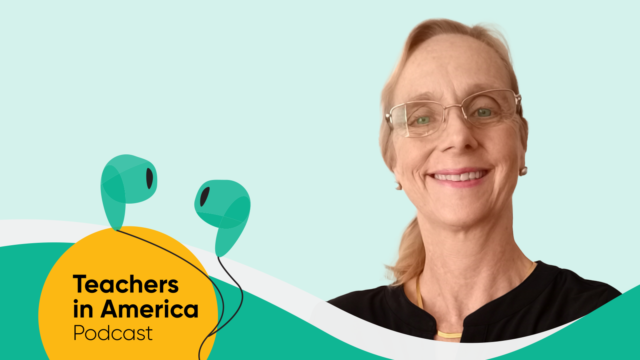
As parents and teachers grapple with distance learning, for many the subject of science (and the rest of STEAM) strikes the most terror into their hearts. For some, it’s because of the way they learned science in their youth—as sessions of lecture and vocabulary memorization punctuated with cookbook-style lab activities in which everyone had to get the exact same correct answer. For others, it’s because they fear they don’t know enough to help their young scholars.
The good news is that science education has been shifting in the past few decades away from an emphasis on being lectured about science so that students “know science,” and more toward students discovering by “doing science.” It’s all about learning how to use scientific habits of thought as tools to guide that kind of discovery. As it turns out, not knowing all the facts, being willing to admit it, and indulging in curiosity to try to find some answers may be the best way to serve as a guide for those learning science, rather than being a “know-it-all.”
At HMH, we’re working to change science education to reflect this approach through our curriculum materials, such as HMH Science Dimensions. Designed from the ground up to address the Next Generation Science Standards* (NGSS), HMH Science Dimensions puts students in charge of their learning and enables teachers to seamlessly guide students on this new instructional path, as students do and think like real scientists. But as summer rolls ever closer, what resources can teachers suggest to parents that will keep curiosity alive and keep kids “doing science” at home so that they’re ready to learn when they go back to school?
One great answer is the Two Whats?! and a Wow! game show-style daily podcast and the soon-to-be-published companion from HMH Books & Media, Wow in the World: Two Whats?! And a Wow! Think & Tinker Playbook. Both come from the creative minds of Mindy Thomas and Guy Raz, hosts of the No. 1 children’s podcast Wow in the World and HMH authors.
In the three years since launching, Wow in the World episodes have been downloaded more than 55 million times. This success is a result of the perspective that Mindy, Guy, and their “chief executive tinkerer” Meredith Halpern-Ranzer, bring as parents, storytellers, and media veterans with experience ranging from Sirius XM’s Kid’s Place Live, National Public Radio (NPR), and Sesame Street.
“We launched Two Whats?! And a Wow! as a rapid response to the worldwide school closures affecting almost a billion children. Our goal was to create a playful daily routine to help make remote learning engaging and entertaining,” say authors Thomas and Raz. “We hope that the playbook will bring families and friends together for games and activities long after the coronavirus that inspired it has passed.”
Aimed at children ages 8 to 12, the playbook takes its cue from the podcast: readers will be challenged to identify the true “wow” scientific fact among three options, two of which are made up. For example, which of the following statements about inventions is true?
- Scientists have invented a clock that is powered entirely by grasshoppers.
- Cotton candy was invented by a dentist.
- The invention of knee macaroni went down in history as the biggest food flop of the 1950s.
Turning the page will reveal backstory about the correct answer (in this case, b) and offer a related STEAM-based activity that can be achieved at home with whatever happens to be at hand. The book will cover a range of science topics from animals, to weather, to space, to much more.
The playbook and the podcasts, both Wow in the World and Two Whats?! and a Wow!, were intended to help break down the misconceptions about what science is like. Here are just a few aspects of the “inside story” of what the podcast and playbook are doing to make science learning FUN again:
- The silly sound effects and goofy jokes in the podcasts reduce the intimidation factor and create engagement, as children will want to listen closely to be sure they don’t miss anything.
- The premise of having some things be not true—and asking children to figure out which aren’t—reinforces the need to critically examine what they see or hear, especially in social media.
- Because the science facts are somewhat obscure, children and their adult partners are on a fairly level playing field when it comes to trying to figure out what’s true.
- Having students choose what they think the answer is and then having them wait until the next episode of the podcast (or the page-turn of the playbook) builds interest and creates a “teachable moment.” Those who guessed right will want to know why their answer was right, and those who guessed wrong will also want to know more.
- Mindy and Guy speak directly to the audience of children, whom they dub as “Wowzers,” and describe them as “citizen scientists,” making it clear that science is not just for certain elites—it’s something everyone can and should participate in.
- The topic-specific challenge that Mindy and Guy present at the close of each episode gives students a chance to “do” all aspects of STEAM—Science, Technology, Engineering, Arts, and Math. They’ll probably discover more as they do it, without even realizing that they’re learning.
There’s way more than that going on, but don’t take our word for it! Check out the podcast here, where you can also find information about ordering the playbook.
*Next Generation Science Standards and logo are registered trademarks of Achieve. Neither Achieve nor the lead states and partners that developed the Next Generation Science Standards were involved in the production of this product, and they do not endorse it.
Related Reading


















